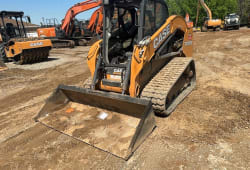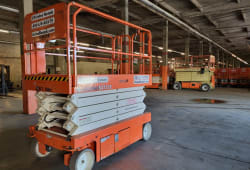Types of Construction: Understanding Type 1-5 Building Methods
3 Min read
)
March 29, 2025
The construction industry classifies buildings into five primary types based on materials, fire resistance, and structural design. Understanding these different types of construction is crucial for developers, architects, and builders to ensure safety, durability, and cost efficiency. Whether you're constructing a commercial high-rise, an industrial facility, or a residential home, knowing the type 1-5 construction classifications will help guide material choices and compliance with building codes.
This guide breaks down the five types of construction, their characteristics, materials, applications, and key considerations.
The Five Types of Construction
The International Building Code (IBC) categorizes structures into five types of construction, each with distinct fire resistance and material requirements.
1. Type 1: Fire-Resistive Construction
:format(webp))
Characteristics:
Built with non-combustible materials like concrete and steel.
High fire resistance, making it the safest building type.
Designed to withstand extreme heat and prevent structural collapse.
Materials Used:
Reinforced concrete
Steel with fireproof coatings
Fire-resistant glass
Common Applications:
High-rise buildings
Hospitals
Government and commercial buildings
Pros:
Superior fire protection
Durable and long-lasting
Cons:
High construction costs
Requires specialized labor
2. Type 2: Non-Combustible Construction
:format(webp))
Characteristics:
Similar to Type 1 but with lower fire resistance ratings.
Designed for structures that do not require extreme fireproofing.
Materials Used:
Metal wall framing
Fire-resistant coatings
Common Applications:
Warehouses
Newer commercial buildings
Large retail spaces
Pros:
More cost-effective than Type 1
Non-combustible materials provide good fire resistance
Cons:
Fire resistance is lower than Type 1
Can be expensive compared to wood-framed construction
3. Type 3: Ordinary Construction
:format(webp))
Characteristics:
A mix of non-combustible and combustible materials.
Exterior walls are usually masonry, while the interior framework is wood.
Materials Used:
Brick or block exterior walls
Wooden floors and roof framing
Common Applications:
Small commercial buildings
Multi-family residential buildings
Pros:
Balanced cost and fire resistance
More durable than wood-framed structures
Cons:
Fire resistance is not as strong as Types 1 and 2
Requires fire-resistant coatings on wooden components
4. Type 4: Heavy Timber Construction (HTC)
:format(webp))
Characteristics:
Uses large, solid wood components.
Resistant to fire due to the slow-burning nature of thick timber.
Materials Used:
Heavy wooden beams
Laminated wood columns
Common Applications:
Historic buildings
Churches
Pros:
Strong and durable
Resistant to structural collapse in fires
Cons:
Expensive materials
Requires skilled labor for construction
5. Type 5: Wood-Framed Construction
:format(webp))
Characteristics:
Most common construction type for residential buildings.
Made primarily from wood, which is combustible.
Materials Used:
Dimensional lumber
Plywood sheathing
Common Applications:
Single-family homes
Low-rise apartment buildings
Pros:
Cost-effective and widely available materials
Faster construction time
Cons:
High fire risk
Requires additional fire safety measures
Comparison: Different Types of Construction
Factors to Consider When Choosing a Construction Type
Selecting the right construction type depends on several factors:
Project Size & Purpose: High-rise buildings require Type 1 or 2, while homes use Type 5.
Local Building Codes: Regulations dictate fire safety requirements.
Budget & Materials: Non-combustible materials cost more but offer better fire protection.
Climate Considerations: Weather resistance is essential for long-term durability.
Conclusion
Understanding the different types of construction is essential for making informed decisions in building projects. Each type 1-5 construction classification has unique advantages, costs, and fire resistance levels. By considering safety regulations, budget constraints, and project needs, you can determine the most suitable building type for your project.
If you're planning a construction project, consult with experts to ensure compliance with industry standards and optimize structural integrity.

Samir Shah is the Co-Founder and Chief Product Officer of Boom & Bucket, where he leads the development of innovative solutions for buying and selling heavy equipment. With a background in engineering, product development, and business strategy, Samir has a track record of taking companies from concept to market success. Previously, he was the Head of Cat Digital Labs at Caterpillar, overseeing digital initiatives and product launches. He holds degrees from MIT Sloan and Carnegie Mellon, and he is passionate about tackling big challenges in underserved industries.







